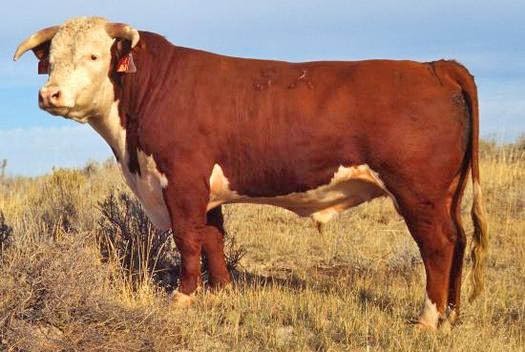November 17, 2010

With breeding season approaching, now is a good time to conduct a breeding soundness exam. A basic breeding soundness evaluation consists of:
• Physical examination of the animal.
• Semen evaluation.
• Measurement of scrotal size.
• Examination of reproductive organs.
The physical exam should ensure that the bull is able to see, eat, smell, and move freely to successfully breed cows. Structural soundness is important if the bull is expected to travel across a range of conditions and mount a cow. Also many structural defects are hereditary and may be passed on to the calves. Body condition should also be examined to ensure the bull has enough condition to breed the cows, with a score of 7 recommended for range bulls entering the breeding season.
Internal reproductive organs should be examined for any inflammation, adhesions, or fibrosis. The spermatic cord, scrotum, testicles, and epididymides are examined for evidence of abscess, injury, frost bite damage, or tumors. The testicles are the factory where sperm cells are produced, and they should be firm, resilient, equal in size, and adequate to large for the bull‘s age. Degenerative change in any of these organs is a frequent cause of reduced fertility. Testicular hypoplasia (underdevelopment) is also evaluated at this time. Hypoplasia reduces fertility and is highly heritable. With this condition one or both testicles are one-third of normal size.
The penis and sheath should be examined for any sores, lacerations, abscesses, scar tissue, or adhesions. On erection with the electro-ejaculator, the penis should come from the sheath in a straight line with the body of the bull. Persistent penile frenulum (tied back penis) is occasionally found during this part of the examination. Injuries to the penis usually occur during the active breeding season, but may be resolved enough to be missed until the breeding soundness exam. Old lacerations and adhesions usually prevent the penis from being fully extended or cause pain during breeding. Bulls with any type of painful lesion will usually quit trying to breed cows. Warts on the tip of the penis are a relatively common finding in young bulls.
Because scrotal size correlates well with daily sperm production and is highly repeatable, scrotal circumference is a valuable indicator of semen production. Bulls with bigger testicles produce more semen and sire sons with bigger testicles. Bulls with larger testicles will reach puberty at an earlier age and will sire heifers that reach puberty at an earlier age also.
A bull can be normal on general physical and reproductive organ examination and still have low fertility due to poor semen quality. Sperm cell concentration (number of normal sperm cells), motility (vigorous, active sperm), and morphology (shape of the sperm cells) evaluations are the basis for the scoring system developed by the Society of Theriogenology. This scoring system has become the standard across the country and is used by almost all veterinary practitioners.
In addition, the following tests or procedures may be included in a breeding soundness evaluation:
• Mating ability. Some assessment of the bull‘s desire (libido) and ability to breed a female in heat (termed serving capacity).
• Pelvic measurement. Believed to be a heritable trait and predictor of early maturity in heifers as well as reducing calving problems.
• Trichomonosis testing.
You May Also Like




